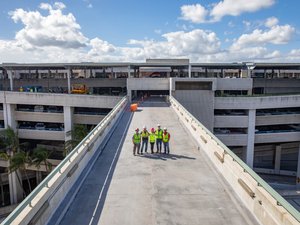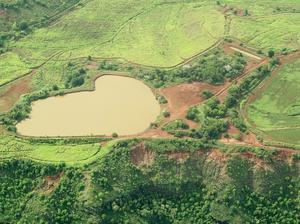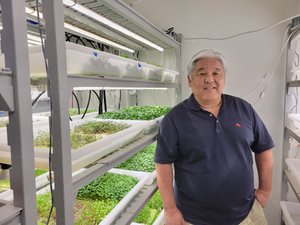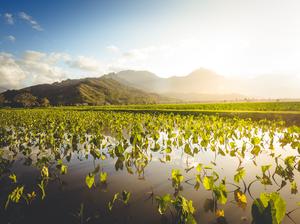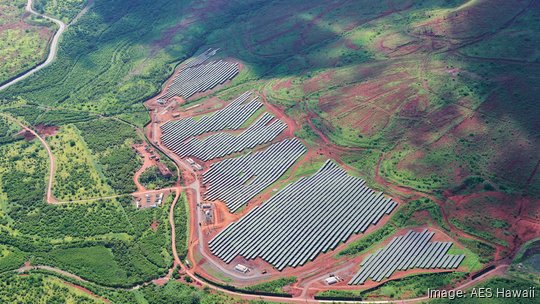
AES Hawaii recently launched its West Oahu Solar plus Storage project, which generates 12.5 megawatts of solar energy and can store up to 50 megawatt hours of electricity. The project, which will provide power to Oahu homes and businesses, joined Hawaiian Electric’s energy grid on March 28, according to AES Hawaii. A blessing ceremony was held on April 9.
“At AES Hawaii, we have a great team that is committed to supporting the state of Hawaii’s renewable energy goals and is passionate about the clean energy projects our company is providing to help make that vision possible,” Sandra Larsen, president of AES Hawaii, told Pacific Business News by email. “We know how important the use of clean energy is to the future of our children.”

The newly opened project is located on about 66 acres in Kapolei, on the University of Hawaii – West Oahu’s Mauka Lands property, according to representatives of AES Hawaii.
This project, like dozens of other AES solar energy projects on the Mainland, uses sheep grazing on the same land as a means of vegetation management, according to the company.
The West Oahu Solar plus Storage project is set to generate about 118 jobs and $20.2 million in total economic output, according to AES Hawaii’s project website.
AES Hawaii was recently recognized as one of Hawaii’s Best Workplaces by PBN.
Representatives of AES Hawaii declined to share the total cost of the buildout. PBN asked Larsen more about the project, solar trends and more.
How did AES Hawaii get the idea for this project? One of our team’s focus[es] is looking for clean energy projects that help to fulfill a greater purpose beyond providing a renewable source for electrical power. In the case of the West Oahu Solar plus Storage project, we are utilizing an abundant natural resource in the hilly land area to provide grazing for sheep, thereby supporting Hawaii’s agricultural and food supply needs. In addition, by partnering with the University of Hawaii – West Oahu campus, we are supporting their decarbonization goals and ability to emphasize the importance of embracing clean energy as a way of life for all students as they go forward with their careers and raising families.
What were a few of the challenges of this project? Were there any supply chain issues? Early in the development process, supply chain logistics were creating delays and challenges in obtaining materials on a timely basis. However, we did not let that deter us from our ultimate goal of bringing this project online, knowing how vital it was to the future of Oahu’s clean energy needs. Another challenge to overcome was the topography of the land, with the sloping hills making the engineering and installation of solar panels a unique test of skills compared to other projects we have developed.
What trends are you seeing in solar right now? Deployment of clean energy in general, and solar energy in particular, continues to accelerate across the country. According to a recent report from American Clean Power, the U.S. clean power industry brought 19,561 MW of new solar capacity online in 2023 — up 49% from 2022. In Hawaii, Hawaiian Electric reported in February that, bolstered by new grid-scale and rooftop solar capacity, the utility had achieved a 33% consolidated renewable portfolio standard, or RPS, in 2023, reflecting progress toward the 2030 RPS milestone of 40%. The 33% is the consolidated RPS for Oahu, Hawaii Island and Maui County and represents the percentage of electricity generated by renewable resources.
The state set a goal to be at 100% renewable energy by 2045. How does this project fit into that? The West Oahu Solar plus Storage project directly supports the state of Hawaii’s goal to run on 100% renewable energy by 2045. The project is expected to result in total avoided fuel consumption of 750,270 barrels of oil over its 25-year span. With its ability to store clean energy generated during the day, the West Oahu facility is a flexible energy resource for Oahu that can deliver clean power when needed to back up short-term outages and interruptions, support peak electricity demand in evening hours, and help Hawaiian Electric maintain a stable and resilient power grid.
Percent of energy generated from renewables by the end of 2023:
Oahu: 30%
Hawaii Island: 52%
Maui County: 35%
Source: Hawaiian Electric
